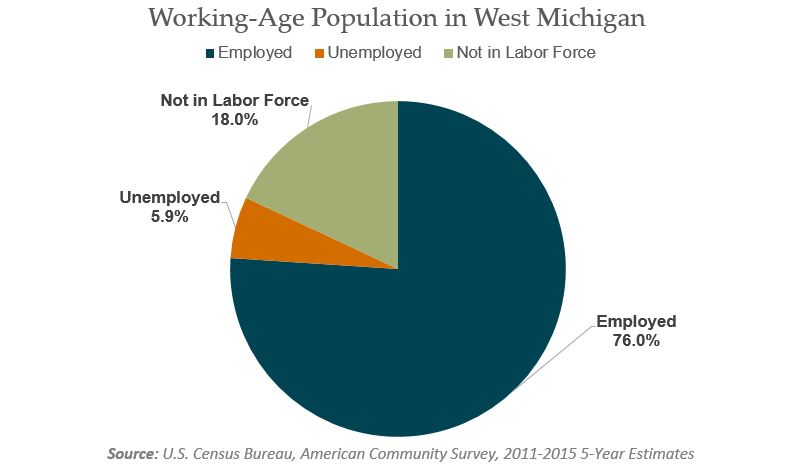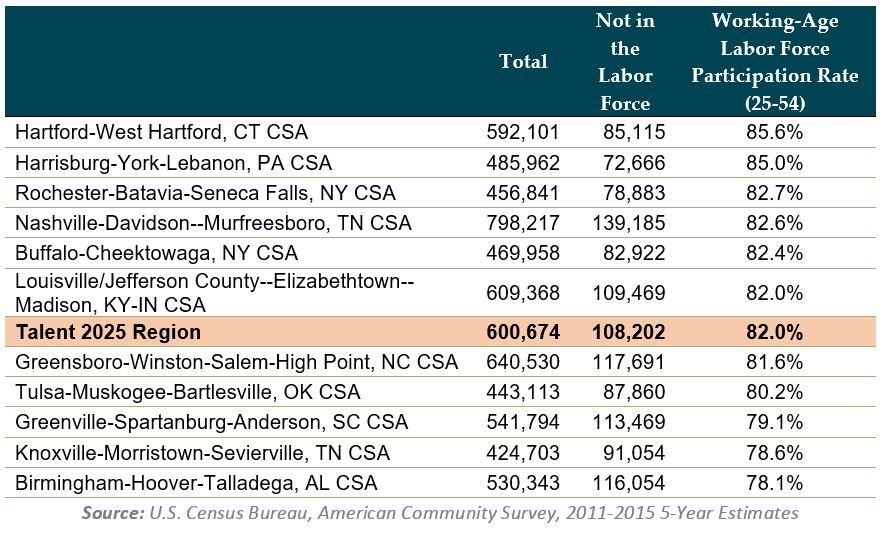More and more in the media, we hear about those who are Out of the Labor Force. What does this actually mean, and how does West Michigan compare?
The labor force participation rate is the way that economists, policymakers, and other researchers take a look at how a population is engaging in the labor force. Simply put, the participation rate is the proportion of a civilian, non-institutionalized adult population (16+ years old) who are either currently employed or are unemployed. To be “unemployed”, an individual must be actively seeking employment. If someone is not employed or unemployed, they are considered to be out of the labor force. This can include stay-at-home spouses, youths who are at least 16 years old and are continuing schooling, retirees, and those who simply choosing not to work.
The Working-Age Labor Force Participation Rate
In Talent 2025’s Workforce Development Working Group, we track the working-age labor force participation rate (which looks at the same rate for those aged 25 to 54). This gives us a good indication of the health of the labor force with regards to those who usually work at very high rates, particularly those who are beyond typical educational years but before typical retirement ages.
According to the American Community Survey, an annual survey conducted by the U.S. Census Bureau, the West Michigan working-age labor force participation rate in 2015 was 82.0 percent. This means that 108,202 individuals between 25 and 54 years of age are out of the labor force. This is a sizable drop from five years ago in 2011 when the rate stood at 83.1 percent.

Comparing West Michigan to Other Regions
Grouping West Michigan with 11 other statistically comparable regions across the country, we rank 7th out of 12 regions for this indicator. The leading region, the Hartford-West Hartford, CT Combined Statistical Area, has a working-age labor force participation rate of 85.6 percent, over three-and-a-half points higher than West Michigan. (The other comparison areas can be seen in the table below.) For West Michigan to rank alongside the Hartford CSA in this statistic, we would need to find a way to bring around 21,705 individuals back into the labor force.

How Can Employers Help?
Want to help us in this effort? Learn more about Talent 2025’s Workforce Development Working Group here.


